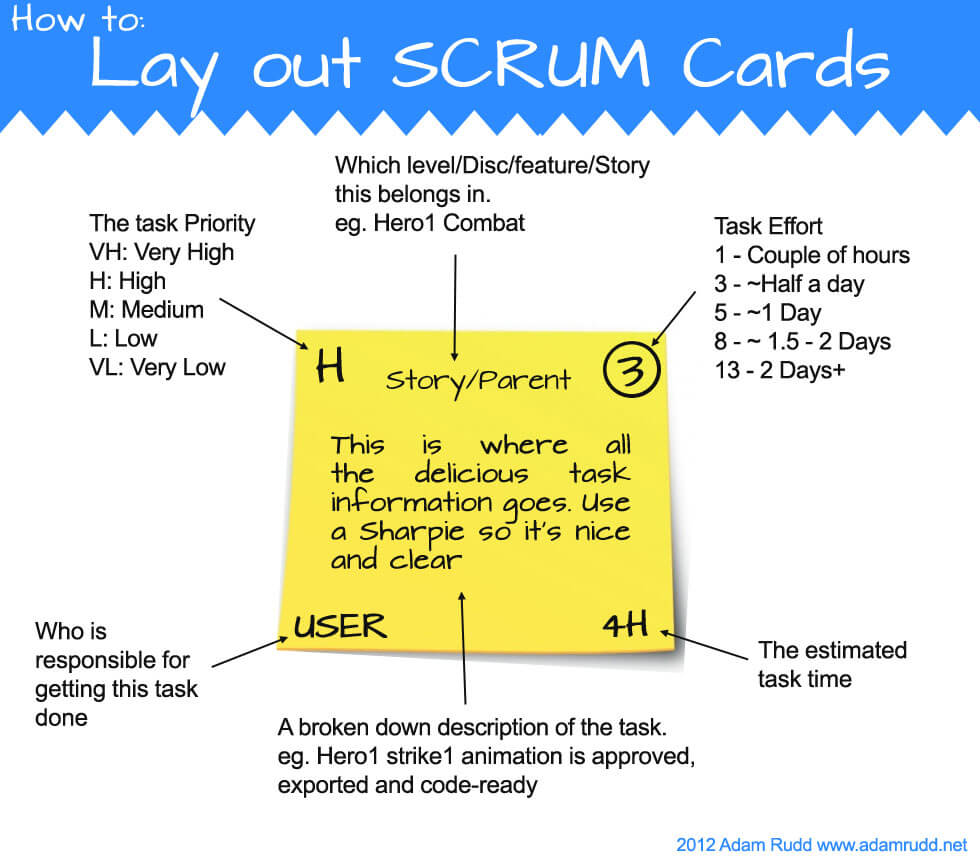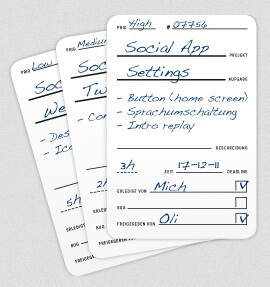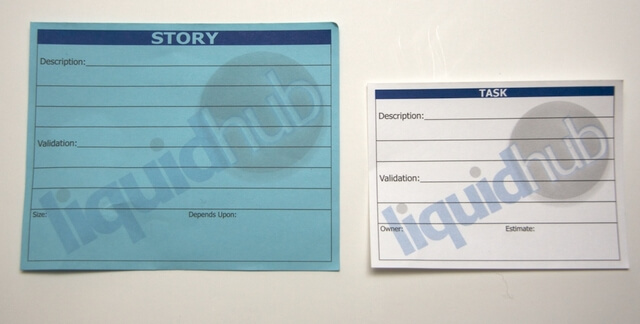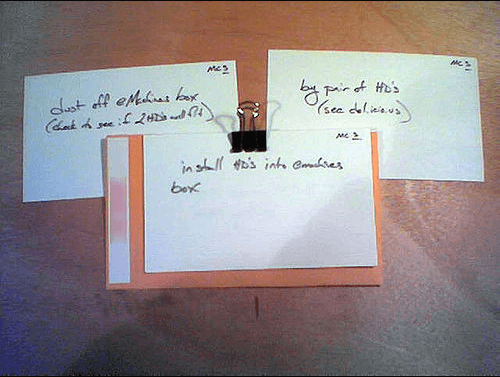Since the very beginning of scrum practices, one of the most important tool to the teams have been the various task cards. They hold all of the important information and help keep the team on tracks at all times. It comes as no surprise, that there is great variety of such cards out there, so this time we are presenting our top 4 of physical scrum task cards.
The classic
There is no denying that the task cards as we know it have started with sticky notes and in fact, many teams are still using them today. The one we liked the most, comes from Adam Rudd and is an improved version of the original with dedicated sections and places for specific information. It brings more clarity and order into the note taking, but lets you keep the format of a sticky note.
The card
After the sticky notes, came the actual cards and here you see the ones by Apps with love. We like these in particular simply because they are kept very concise and small, but at the same time hold all the information that is important to the team.
The sizes
Another great take at the physical cards is presented by Matthew Botos. While the detailing of the information is not as great as in the previous example, this one has great separation techniques for stories vs tasks. Differentiating project cards in this way allows for more visual information to be portrayed on the board and the team can instantly evaluate their status and progress.
The information packers
Lastly, we come to scrum cards by Josh DiMauro. No matter how much they want it, some teams, simply cannot drill down their task information into a small card. In such cases, task cards like these are a great option. They are still small in size, however, the envelope stuck to the back of each card allows to pack in as much information and details as needed.
Are you using physical scrum task cards? Share them with us!








